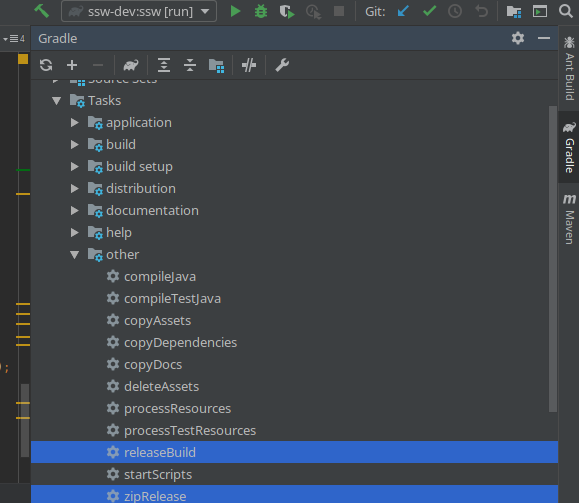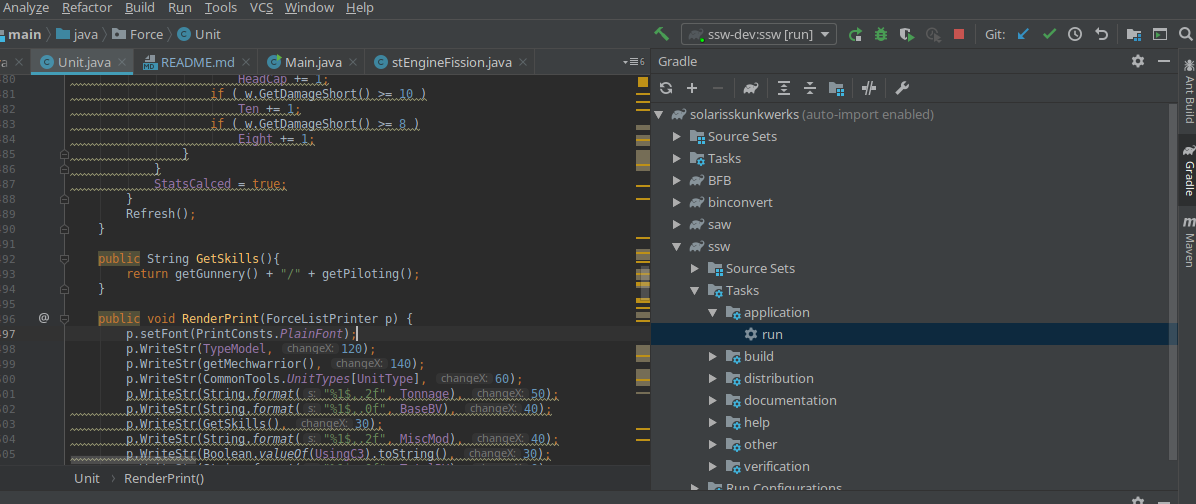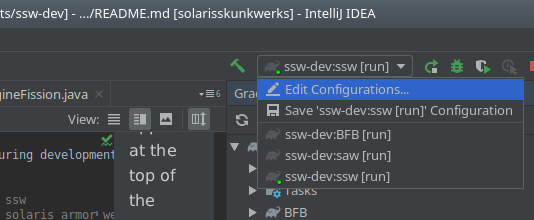Solaris Skunk Werks is a community-supported tool used to design Battlemechs for use with the Battletech tabletop wargame.
Download the latest release and extract it into the
desired directory. You can then launch the various applications by double clicking them or from the command line with
java -jar SSW.jar. More detailed install instructions can be found in this repository's wiki
This project uses the gradle build system and requires gradle and a JDK of version 8 or higher to be installed to be able to compile from source. If you intend to develop the project with an IDE, you'll need one with gradle support. Intellij IDEA and Netbeans 11.x have been tested and both have gradle support out of the box. Netbeans earlier than 11.x should work but you may need to install the gradle plugin.
To build the full suite of applications on the command line, run the following gradle task (substitute .\gradlew.bat in all of these commands
if you're on Windows):
$ ./gradlew releaseBuild
This will compile all of the applications and dependencies and place them in build/release/SSW_-<version>.
To build a release zip containing all of the applications:
$ ./gradlew zipRelease
This will create a zip file containing all applications in the SSW suite under build/distributions. Simply unzip that
file wherever you want to install it.
These tasks can also be ran directly from Intellij IDEA and Netbeans by selecting the task from the Gradle tasks section of the UI:
To build and run SSW directly from the command line during development:
$ ./gradlew ssw:run // Compile and run a dev build of ssw
$ ./gradlew saw:run // Compile and run a dev build of solaris armor werks
$ ./gradlew bfb:run // Compile and run a dev build of battletech-force-balancer
Note that all gradle tasks can also be ran directly from the IDE if you aren't comfortable with the command line. In Netbeans 11, the gradle tasks appear in the bottom left portion of the screen. In Intellij, the gradle menu should be in the top right:
After you run a subproject using the gradle menu once, it will appear at the top of the screen for easier access later:
To debug in IDEA, first run the target application once using the gradle menu as shown above. After it appears in the quick menu at the top, click the debug icon. Debugging in Netbeans is similarly straightforward.
SSW's development workflow generally follows the git workflow described here. In summary:
- Fork this repository and clone your copy locally.
- If you're implementing a bug fix, checkout the
hotfixbranch. - If you're implementing a new feature, checkout the
developbranch. - Create a new branch and commit your changes, then submit a pull request. Features should be merged into
developwhile bug fixes should be merged intohotfix.
Feel free to join our Discord Server to ask questions, report bugs or help with QA testing.


